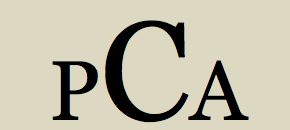Piedmont Sued by Crown Castle Cell Tower Company
The Crown Castle Corporation filed a complaint in Federal Court against Piedmont prior to completion of the cell tower permit consideration process. Crown Castle blames the City for its failure to offer complete applications and is suing to overturn the five denials and the conditional approvals on three cell towers. Crown Castle Corporation, listed on the New York Stock Exchange, is “the nation’s largest provider of wireless infrastructure.”
Many Piedmont residents have been outraged at the Council decision to allow conditional approval of the sites. Opposition has been primarily based on health concerns, unsubstantiated need and aesthetic problems.
Read a report of the matter below:
http://scientists4wiredtech.com/2017/12/crown-castle-sues-piedmont/



David v. Goliath. Hopefully same outcome. Crown Castle claims of “capacity” were always pretty nebulous. Cities can’t claim health effects but should require better demonstration of current usage, projected growth, and required capacity from Crown Castle.
Considering the total ineptitude of the contractor working for AT&T at their cell site expansion in the median between Grand Ave and Lower Grand Ave, I say: “Don’t back down!”.
Whether local governments like it or not, the federal government has pre-empted the field of cellular transmission electrical emissions. I hope the City Council is getting proper legal advice as this opposition to antennas on health reasons that we are seeing play out, may prove very costly to the public.
To the City Counsel:
I encourage you to settle the Crown Castle lawsuit and approve their application. Here is my point of view for whatever it is worth to you:
1- All new technologies carry risks that have to be weighed against the benefits to our community, our State, and our Nation. Here is a comparison of common risks in the US:
– Lifetime risk of death by injuries (such by car, fall, gun fire, …) for a person born in 2014: 1 in 20 as documented by the Information Insurance Institute.
– Teenagers’ risk of injuries (treated in an emergency room) suffered in motor vehicle crashes: 1 in 25 as per Center for Disease Control.
– Lifetime risk of developing cancer due to background radiation : 1 in 100 as per the National Center for Health Research. Background radiation refers to radiation that naturally occurs in our environment and does not come from any manufactured devices, such as emitted from the earth, sun, our galaxy, and other galaxies. The vast majority of non-invasive cancers are non-melanoma skin cancers caused by non-ionizing ultraviolet radiation.
– Lifetime risk of brain cancer after 20 years of cell phone use: 1 in 200. This is the only available evaluation and an entry in the blog of Joel Moskowitz, PhD, a member of our community, Director and Principal Investigator, Center for Family and Community Health, UC Berkeley.
2- The Sutro Tower emitted TV programs at an Effective Radiated Power (ERP) of 10 Million Watt for decades (versus 730 Watt ERP for a Crown Castle antenna). A 2001 review of epidemiology studies by the San Francisco department of public health concludes as follows: “Because of weaknesses (in the peered reviewed studies), current evidence does not suggest that living near broadcast towers would lead to an increased risk of cancer”.
3- It is easy to measure the strength cell provider signals using one of the many applications available. A good one is “Network Cell Info” for Android phones. Note that -100 dBm is essentially 0 Watt, and -36dBm is 0.000,000,3 Watt. One can also test the effectiveness of the Faraday effect to shield an area by placing a flat conductive wire mesh between a cell phone and its sending tower antenna.
4-The power emitted by a cell phone during a call ranges from 1 milliWatt when reception is good to 1 Watt (a thousand time more) when the reception is poor. (The power level picked by a cell phone for a call is negotiated between the phone and the equipment attached to the cell tower antenna when the call is established. It is then adjusted during the call to maintain good communication). Transmitted energy density diminishes with the square of distance. At 1 Watt, the brain is exposed to a power density of 35 milliWatt/cm^2 (phone against the ear at 1.5 cm from skull). The additional maximum exposure to the signal transmitted by one of the proposed Crown Castle antenna is 19 microWatt/cm^2 or 1800 times less. It is quite possible that a resident who lives in an area with very poor coverage and who spends a significant amount of time on her phone at her home everyday would be exposed to less cumulative radiated energy should an antenna be installed in front of her house. Fear your cell phone more than tower antenna!
5- With regard to scientific research, studies’ reproducibility and replicability are among the main principles of the scientific method. There is an on-going crisis in research with regard to reproducibility as reported by the Journal Nature on May 25, 2016 : 70% of researchers surveyed by the Journal Nature have tried and failed to reproduce another scientist’s experiments, and more than half have failed to reproduce their own experiments.
Bernard Pech
Piedmont Resident
Sorry-I think the risk of harm is not so marginally small that it should be ignored.
http://safeliving.tamers.biz/index.php/item/127-firefighters-say-no-to-cell-antennas-on-fire-stations
https://scientists4wiredtech.com/2018/07/firefighters-living-next-to-cell-towers-suffer-neurological-damage/
Most firefighters only work 3 days a week and we want to install them on our schools or in front of our homes? Sorry I don’t believe this is something I want to do. If Bernard would like one in his front yard, maybe he can request it?